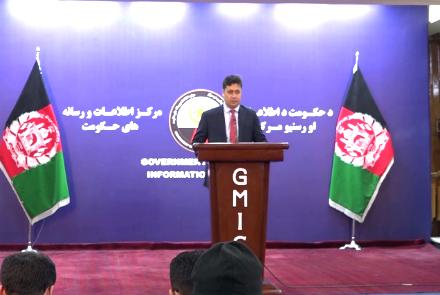Officials from Journalists Safety Committee on Thursday said that Afghanistan, with 120 cases of violence against journalists, has been ranked for the second time as the most dangerous country for journalists in 2018.
According to the Afghan journalist community, security threats and lack of access to information continue to impede activities for reporting.
Cases of violence against Afghan journalists in 2018 include 17 cases of murder and others mainly of beatings, intimidation and kidnapping.
“The Afghan government and those working for the Afghan government placed in the second category and they are blamed for 44 cases of violence and threats against journalists,” said Omid Sharifi, chairman of Journalists Safety Committee.
“Based on the information and analysis which we have, threats against journalists are still serious,” added Sharifi.
Eleven cases of violence were recorded against female journalists.
Kabul was the most dangerous place for journalists with 42 cases of violence.
Despite challenges for the media in Afghanistan, 57 new media outlets began activities in the country during 2018.
“Information is limited and so are resources, they cannot access information at the appropriate time,” said journalist, Lida Nawrozi.
This comes at a time when the Taliban on January 5 executed Afghan journalist, Javid Noori. The killing marks the first of a journalist in Afghanistan in 2019.
Reporters Without Borders (RSF) condemned Afghan citizen-journalist Javid Noori’s summary execution by Taliban fighters at a roadblock in the western province of Farah on January 5, the RSF said in a report on Tuesday.
Noori, who worked for the Farah regional government as well as hosting two programs on Radio Neshat, was travelling on a bus with about 30 other passengers when it was stopped and searched at a Taliban roadblock, the RSF said.
The Taliban shot him after finishing their search. “He was killed after being checked and then moved to one side,” a witness said, as quoted by RSF. The Taliban later issued a formal statement announcing “the execution of an enemy officer during a control".
Aged 27, Noori began hosting a Radio Neshat programme called "Psychology of the Green Life" in 2016, after completing his psychology studies at the University of Kabul, the report said. For the past year, he had also been hosting the “Friday evening” program on social issues.
The world’s deadliest country for the media in 2018, with a total of 15 journalists killed, Afghanistan is ranked 118th out of 180 countries in RSF’s 2018 World Press Freedom Index.

